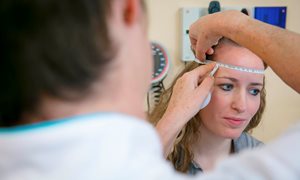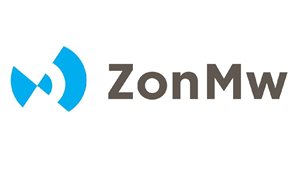
Abnormalities in the NPL protein cause muscle degeneration and muscle weakness in patients. Researchers from Canada, Italy and the Netherlands describe in Science Advances the role of this NPL protein in the disease process. In mice, the disease process can be stopped with a specific sugar (ManNAc). This knowledge offers starting points for a therapy in humans.
Muscle diseases greatly impact patients' lives. For most of these muscle diseases, predominantly hereditary, no treatment is available. Researchers from Radboudumc and the University of Montreal have previously found a rare muscle disease caused by an abnormal NPL protein. This protein plays a role in the metabolism of sialic acid, a sugar usually built into proteins. Why this protein leads to muscle disease - when it malfunctions or is absent - was not clear.
Elucidating the cause
In follow-up research published in Science Advances, Canadian researchers examined in mice without NPL how the muscle disease arises. As part of the project, researchers from Radboudumc found there was a disruption in sugar metabolism in the muscles. Furthermore, it was seen in mice that the absence of NPL was associated with reduction in muscle strength and endurance and with slower healing. After muscle damage, a smaller size of newly formed muscle fibers was found to be associated with impaired mitochondrial energy production, a surprising new link to sialic acid. In mouse models for Duchenne and myotonic dystrophy, NPL activity was increased, possibly revealing a more general mechanism for muscle disease.
Diagnosis and treatment?
Sjanie Huang and Dirk Lefeber, co-authors of the article, point out a remarkable part in the study. Huang: "After the underlying mechanism was elucidated, another possible treatment was tested in mice with this NPL deficiency. They were fed from birth a diet containing N-acetylmannosamine (ManNAc), a sugar that plays an important role in metabolism and may be able to partially take over the lost role of NPL. As it turned out, the ManNAc-fed mice maintained normal muscle strength after six weeks, even after treatment was stopped.”
Lefeber: “This indicates recovery of muscle structure. Moreover, the same treatment accelerated the healing process of muscles in NPL deficient mice. This is an encouraging result. Follow-up research should clarify whether patients with NPL deficiency can indeed benefit from rapid diagnosis and early treatment. If so, this approach can also be investigated in other muscle diseases in which NPL deficiency also plays a role."
-
Paper in Science Advances: N-acetylneuraminate pyruvate lyase controls sialylation of muscle glycoproteins essential for muscle regeneration and function - Afitz Da Silva, Junio Dort, Zakaria Orfi, Ikhui Kho, Xuefang Pan, Emilie Heckel, Giacomo Muscarnera, Patrick Piet van Vliet, Sjanie Huang, Luisa Sturiale, Angela Messina, Donata Agata Romeo, Clara D.M. van Karnebeek, Xiao-Yan Wen, Aleksander Hinek, Gregor Andelfinger, Benjamin Ellezam, Yojiro Yamanaka, Hernando J. Olivos, Carlos R. Morales, Jean-Sébastien Joyal, Dirk J. Lefeber, Domenico Garozzo, Nicolas A. Dumont, Alexey V. Pshezhetsky.
-
Want to know more about these subjects? Click on the buttons below for more news.
More information
Pieter Lomans

persvoorlichter
Related news items

Women more likely to develop mild variant Stargardt's disease
24 May 2024In the mild form of Stargardt's disease, an inherited eye disease, women are more likely to experience vision problems than men. This is shown in doctoral research by Stéphanie Cornelis.
go to page
Radboudumc participates in HiFi Solves, a Global Consortium of Clinical Genomics Research Leaders Aim to Share Best Practices and Increase the Understanding of Genetic Disease
22 November 2023HiFi Solves, a Global Consortium of Clinical Genomics Research Leaders including Radboudumc, is going to start
go to page
New Nijmegen method reveals hidden genetic variations Valuable data mining in the dark corners of the exome now possible worldwide
1 November 2023Many hidden genetic variations can be detected with Chameleolyser, a new method developed in Nijmegen.
go to page
Advancing Therapies for Pediatric Renal Ciliopathies - TheRaCil
5 October 2023The Imagine Institute will coordinate the project Therapies for Renal Ciliopathies (TheRaCil), a project funded through Horizon Europe for the period 2021-2027 in which Radboudumc participates.
go to page

